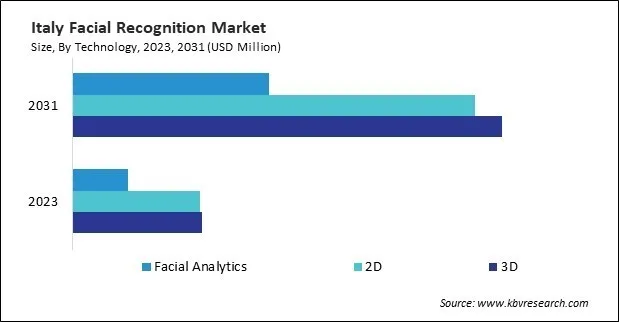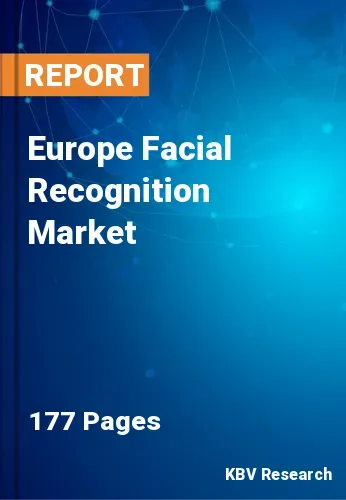The Europe Facial Recognition Market would witness market growth of 14.1% CAGR during the forecast period (2024-2031).
The Germany market dominated the Europe Facial Recognition Market by Country in 2023, and would continue to be a dominant market till 2031; thereby, achieving a market value of $1,029.6 million by 2031. The UK market is exhibiting a CAGR of 13% during (2024 - 2031). Additionally, The France market would experience a CAGR of 15% during (2024 - 2031).

Innovations in technology are driving the development of advanced capabilities, features, and applications that address evolving market needs and unlock new opportunities. Advancements in facial emotion recognition algorithms enable identity verification systems to detect and analyze emotional expressions, sentiments, and mood states, opening opportunities for applications in customer sentiment analysis, personalized marketing, and mental health monitoring.
The integration of identity verification with other biometric modalities, such as fingerprint recognition, voice recognition, and behavioral biometrics, enables multimodal biometric fusion techniques that enhance accuracy, robustness, and security in identity verification applications, particularly in high-security environments and regulated industries. Integrating identity verification with other biometric modalities strengthens security and enhances fraud prevention capabilities in identity verification applications.
The United Kingdom's border security and immigration authorities are adopting identity verification systems to strengthen border control measures and enhance immigration processes. The technology is utilized at ports of entry, airports, and border checkpoints to verify travelers' identities, detect fraudulent documents, and identify individuals on watchlists or with immigration violations. As per the data published in 2021 by the International Trade Administration, the UK security and resilience sector was valued at approximately $15bn and growing. The UK physical security sector was expected to be stable over the next year, with no significant growth reaching $5.93bn in 2022. In addition, the rising healthcare sector in the EU is driving the expansion of facial recognition technology as healthcare organizations seek to enhance patient safety, efficiency, and personalized care delivery. As per the data from the Organization for Economic Co-operation and Development, in 2020, an unprecedented 10.9% of the GDP of the European Union was devoted to health care. With health expenditures exceeding 12% of their GDP, Germany and France allocated the highest proportions. Belgium, Austria, Sweden, and the Netherlands spent more than 11 percent of their GDP on health. Hence, the rising healthcare and security sectors in Europe will fuel the demand for such systems in the region.
Free Valuable Insights: The Global Facial Recognition Market will Hit USD 16.8 billion by 2031, at a CAGR of 14.5%
Based on Organization Size, the market is segmented into Large Enterprises, and Small & Medium Enterprises. Based on Deployment Mode, the market is segmented into On-premises, and Cloud. Based on Offering, the market is segmented into Software, Hardware, and Services. Based on Technology, the market is segmented into 3D, 2D, and Facial Analytics. Based on Application, the market is segmented into Access Control, Attendance Tracking & Monitoring, Security & Surveillance, Emotion Recognition, and Others. Based on Vertical, the market is segmented into Government, Media & Entertainment, Education, Healthcare & Lifesciences, Automobile & Transportation, Manufacturing, Retail & eCommerce, IT & Telecom, and Others. Based on countries, the market is segmented into Germany, UK, France, Russia, Spain, Italy, and Rest of Europe.

By Organization Size
By Deployment Mode
By Offering
By Technology
By Application
By Vertical
By Country
Our team of dedicated experts can provide you with attractive expansion opportunities for your business.

